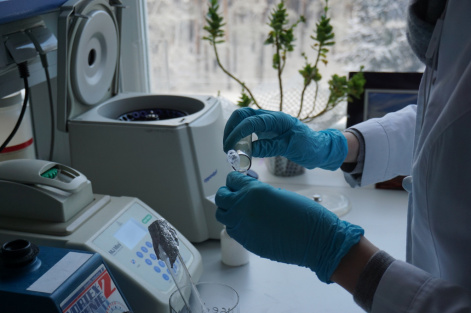Bioluminescent tests will open the way for nanomaterials in medicine
3 July 2019 г.

The development of technology is changing all spheres of human life. This includes medicine within which a new direction was formed, namely, nanomedicine based on the use of nanotechnology. Carbon is one of the most suitable and promising chemical elements for creating nanostructures. Currently, such forms of carbon as fullerenes, nanotubes, nanofibers, nanodiamonds, and graphene have been discovered. Scientists suggest that, among other things, they can be used for targeted drug delivery, placing drugs inside nanoparticles, or for creating highly sensitive markers capable of detecting serious diseases at an early stage.
Projects involving the use of nanomaterials in medicine and pharmacology are implemented only within the laboratories, since the mechanisms of action of these smallest structures are not fully understood. One of the most common problems is nanoparticle toxicity; its manifestation is not always clear. Due to this uncertainty and insufficient knowledge, the use of carbon nanoparticles is complicated. Scientists are not completely sure about the safety of such drugs.
The Krasnoyarsk biophysicists proposed to use bioluminescent tests to estimate the toxicity and antioxidant activity of carbon nanoparticles. The scientists tested this method on fullerenols - water-soluble derivatives of fullerenes. They seem to be promising for the creation of antibacterial, antifungal, antiviral, anticancer drugs and components of composite biomaterials. In their study, the researchers not only determined the structural features of fullerenols and their properties, but also developed principles for selecting nanomaterials for the synthesis of medical products.
To study the properties of nanomaterials at the cellular and biochemical levels, the Krasnoyarsk scientists suggest using two types of bioassays created based on cells of luminous marine bacteria and their enzymes. The use of such biotests makes the assessment of toxicity and antioxidant activity extremely simple and fast. If the luminescence in the experiment decreases, then the sample is toxic, as it inhibits cellular processes and slows down the biochemical reactions responsible for it. If, having placed the nanomaterial in the solutions of oxidative toxicants, bioluminescence is activated, this indicates the manifestation of antioxidant properties and detoxification of the medium.
Using bioluminescent tests, scientists found that the toxicity and antioxidant activity of fullerenols depends on the number of oxygen-containing substituents which they include. If there are many of them in the structure of fullerenol, it exhibits high toxicity and weak antioxidant activity. Reducing the number of substituents reduces toxicity and increases the antioxidant activity of fullerenol.
For example, they studied a modified fullerenol molecule with an embedded gadolinium atom and a large number of oxygen-containing substituents. Gadolinium-containing drugs are promising in the diagnostics of cancerous diseases due to specific paramagnetic properties of this metal. However, the toxicity of such drugs is a problem for their use. According to scientists, in order to reduce the toxicity of gadolinium-containing fullerenol, it is necessary to reduce the number of oxygen substitutes during the synthesis.
“We investigated the toxicity and antioxidant activity of fullerenols with different numbers of oxygen-containing substituents using cellular and enzymatic bioluminescent tests. We found that fullerenols with a smaller amount of oxygen-containing substituents are not as toxic as fullerenols with a larger amount of oxygen-containing substituents. To reduce the toxicity, we recommend reducing the number of oxygen-containing groups attached to the carbon structure. Our study shows that bioluminescent tests can be used to compare and select carbon nanoparticles with specific toxic and antioxidant characteristics,” says Ekaterina Kovel, one of the researcher, graduate student of the Krasnoyarsk Science Center SB RAS.
Thus, bioluminescent methods used by the Krasnoyarsk biophysicists allow studying the toxic and antioxidant effects of nano-sized materials. Bioluminescent tests are easy to use, since they are characterized by fast analysis, and allow one to simultaneously examine a large number of samples. The scientists note that such bioluminescent methods will help to anticipate the properties of water-soluble carbon nanomaterials at the stage of their synthesis, which is extremely important for creating new medical products based on them.
Share:
